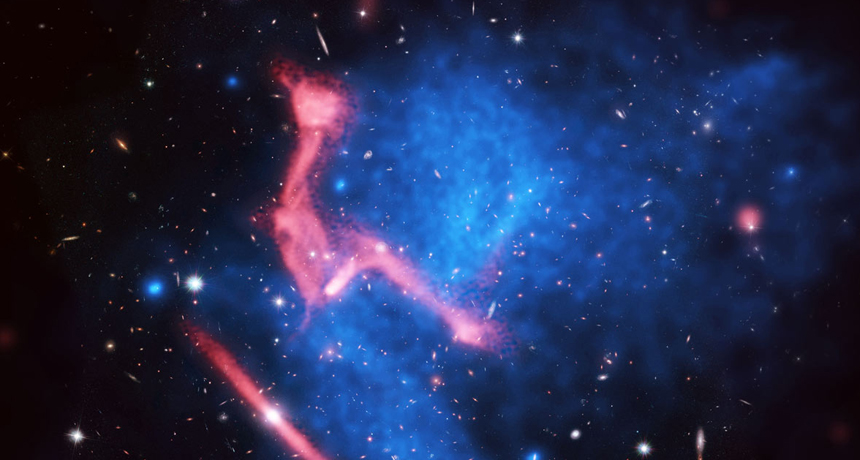Monster collision in space
Four clusters of galaxies are smashing into each other

The image is a composite of X-ray and radio-wave data. It shows four galaxy clusters colliding. Gas (blue) heated to many millions of degrees Celsius fills the space between galaxies. The smashup sent a fountain of charged particles along a jet (red, center) that is 2.5 million light-years long.
VAN WEEREN ET AL., BILL SAXTON/NRAO/AUI/NSF, NASA







